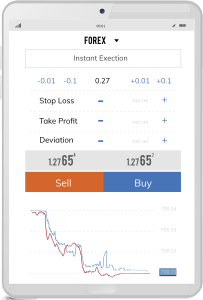In the dynamic realm of forex trading, understanding the concept of pips is paramount for successful navigation through the intricate market landscape. Welcome to our comprehensive guide where we unravel the essence of pips, delve into their significance, and equip you with the knowledge necessary to optimize your trading strategies.
What Are Pips in Forex Trading?
Pip, short for “percentage in point” or “price interest point,” serves as the fundamental unit of measurement in forex trading. It denotes the smallest incremental movement in exchange rates between two currencies. Typically, a pip is represented by the fourth decimal place in most currency pairs.
Unveiling the Significance of Pips
Pips play a pivotal role in determining the profit or loss in a forex trade. A movement of just a few pips can translate into a substantial monetary gain or loss, depending on the volume of the trade. This minute measurement allows traders to quantify price fluctuations and gauge market trends accurately.
Calculating Pips: A Step-by-Step Guide
Understanding how to calculate pips is indispensable for effective forex trading. Let’s break down the process step by step:
- Identify the Currency Pair: Begin by selecting the currency pair you intend to trade. For instance, consider the popular EUR/USD pair.
- Determine the Exchange Rate: Once you’ve chosen the currency pair, ascertain the current exchange rate. For instance, if the EUR/USD pair is trading at 1.1200, this is the baseline rate.
- Monitor Price Movement: As the market fluctuates, observe the change in the exchange rate. If the EUR/USD pair rises to 1.1210, the difference is 10 pips.
- Account for Lot Size: The lot size, or volume of your trade, is a crucial factor. A standard lot is typically $100,000, but you can adjust your position size accordingly.
- Perform the Calculation: To determine the pip value in monetary terms, divide the change in price by the exchange rate and multiply by the lot size. In our example, (1.1210 – 1.1200) / 1.1200 * $100,000 = $100.

The Role of Pips in Risk Management
Effective risk management is contingent upon comprehending the impact of pips on your trading endeavors. By strategically setting stop-loss and take-profit levels based on pip movements, traders can mitigate potential losses and secure profits.
Advanced Strategies Utilizing Pips
Experienced traders often employ advanced strategies that harness the power of pips for optimal outcomes. Here are two such strategies:
- Scalping: This strategy involves capitalizing on minor price fluctuations, aiming to secure a small number of pips multiple times a day. Scalpers meticulously analyze short-term trends to make swift and precise trades.
- Swing Trading: Contrary to scalping, swing trading focuses on capturing larger price movements. Traders hold positions over several days, aiming for substantial gains by riding the wave of significant market shifts.


